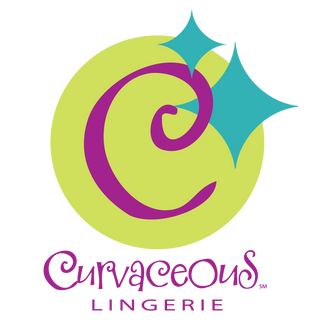Curvaceous Lingerie Bra Fitting Quiz
How To Figure Out Your Bra Size
Did you know that around 80% of women are wearing the wrong bra size?
Use our Bra Fit Quiz to find an estimated UK bra size as well as what types of bras might suit you best!
In order for us to give you the best advice, please put on your best fitting bra before beginning the quiz. Don't worry if it doesn't fit well! This should be the type of bra that you would wear on an everyday basis. Do not use a sports or strapless bra.
How to put on your bra
- Start by fastening the bra on the loosest hook. This will allow you to adjust the fit as needed when the bra's elastic loses effectiveness.
- If you fasten the bra in front of you and spin around, make sure that your cups stay upright instead of flipping them - this helps preserve the bra's wire and cup shape.
- Use your fingers to scoop your breast tissue up and into the cups, ensuring that all of your breast tissue is contained within the bra cups.
- Stand up straight and adjust the bra so that the underwire sits flat against your ribcage, and the cups cover your breasts without any gaps or spillage. Check the position of the underwire - it should sit in the crease where your breast tissue meets your ribcage, and the gore (the part of the wire in the middle of the bra between your breasts) should be flat against your ribcage.
- Adjust the straps so that they are snug but not too tight. You should be able to fit two fingers comfortably between the strap and your shoulder.
If you're more of a video person, check out this lovely video by Kimmay Caldwell for information on how to best put on your bra.

All set? Great! Now you're ready to take the quiz. Click the button below to get started.
The Bra Fit Quiz
-
Are your breasts spilling out of the cups of the bra?
-
Does the center front of the bra (the gore) lie flat against your chest?
-
How does the band of your bra feel?
-
How do your straps fit?
-
How does the underwire of your bra fit? (Please select all answers that apply):
-
How many times have you worn the bra you're wearing for the fit quiz?
-
Which if any of the following fit problems do you experience with bras? (Please select all answers that apply or select 'None of the Above' if you do not experience these issues):
-
What are you looking for in a bra? (Check at least one box; multiple answers may be selected):
About the Different Types of Bras/Your Results
Thank you for answering our questions!
Based on what you’ve told us, you in the correct size. You are wearing size default . You should try size . Our size recommendations are given to you in US sizes as that is what most of our customers are familiar with. If you are more familiar with UK bra sizing, you can convert your US size to your UK size by clicking here.
Types of Bras for you
The following kinds of bras are the most likely to suit you. Click on any of the information boxes below to browse our selection!
Balconette Bra

The balconette bra has cups that are cut horizontally across the top, giving a more horizontal line to the bust. This style typically has wide-set straps and a low-cut front, making it ideal for wearing with scoop neck or wide-neck tops.
Advantages:
- Balconette bras provide great lift and support, and are perfect for creating a rounded shape.
- Balconettes have wider-set straps, which is a benefit to people with wider shoulders.
Disadvantages:
- Having wider center gores means that balconette bras might not be suitable for people with close-set breasts (breasts without much space between them.)
- The wide set shoulder straps can slip off of people with narrower shoulders.
Front-Closure Bra

The front-closure bra is designed with a clasp or hook-and-eye closure in the front of the bra, rather than the back. This can make it easier to put on and take off, especially for those with mobility issues.
Advantages:
- Front-closure bras are easy to put on and take off, and can be a great option for those with mobility issues.
Disadvantages:
- Front-closure bras may not be as adjustable as bras with back closures, as the band size is fixed.
- Most front closure bras with a high center do not have an underwire, often requiring a choice between ease of wear and support for the breasts.
Full-Coverage Bra

As the name suggests, this bra style provides full coverage and support for the breasts. The cups are typically cut higher on the chest, and the straps are set closer together for added support.
Advantages:
- Full-coverage bras provide great support and coverage.
- They can help prevent spillage or bulging.
Disadvantages:
- Full-coverage bras may not be the best option for those with smaller breasts or shorter breasts, as the higher-cut cups may not fit properly.
- They can also be more difficult to wear with certain clothing styles, such as low-cut tops.
Plunge Bra

This bra style is designed with a deep V-shaped neckline in the front, making it ideal for low-cut tops or dresses. Plunge bras typically have padded cups and underwire for support, and the straps are set wide apart to help keep them hidden under clothing.
Advantages:
- Plunge bras provide great cleavage and are perfect for low-cut tops or dresses.
- They tend to have a more natural-looking shape than some other bra styles.
Disadvantages:
- Plunge bras may not be the best option for those with larger breasts, as the deep neckline may not provide enough support.
- They usually have a narrower center gore, which may not be comfortable for those with wide-set breasts (those with more center space between their breasts).
T-Shirt Bra
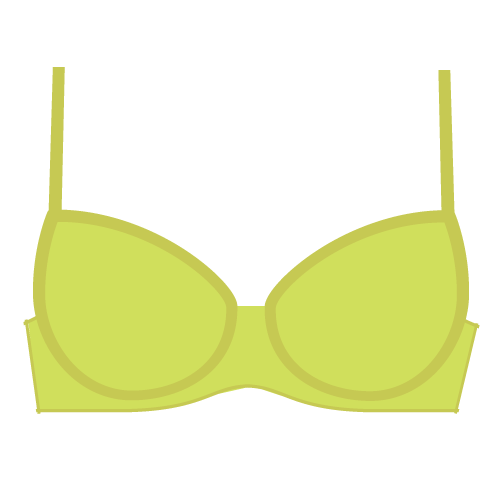
The t-shirt bra is designed with seamless cups and smooth fabric, making it ideal for wearing under tight or clingy clothing. It typically has a more rounded shape than other bra styles.
Advantages:
- T-shirt bras are perfect for wearing under tight or clingy clothing, as they provide a smooth and seamless appearance.
- Since they have smooth cups, T-shirt bras do not have any bulky seams or details.
Disadvantages:
- They may not work well with certain clothing styles, such as low-cut or sheer tops.
- T-Shirt bras can be hard to fit because their shape needs to match with the shape of the natural breast.
Wireless Bra
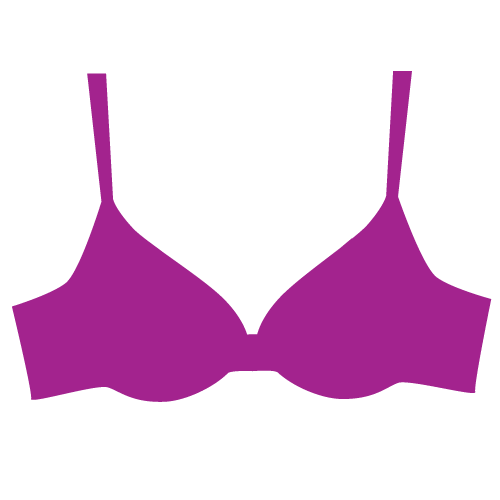
The wireless bra does not have any underwire or structured cups. Instead, it relies on the fabric and design of the bra to provide support and shaping.
Advantages:
- Wireless bras tend to be more comfortable than bras with underwire.
- They do not have any rigid components that can dig into the skin.
Disadvantages:
- They may not provide enough support, particularly for well-endowed people.
- Wireless bras have a less defined shape than bras with underwire and cannot provide the same lift as a bra with an underwire.
Sports Bra
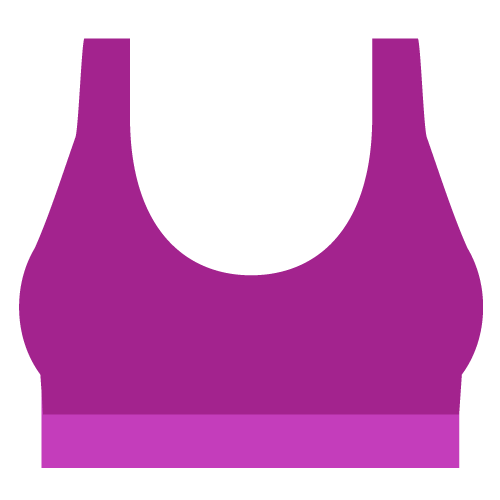
A sports bra is a specialized type of bra designed to provide support and comfort during physical activity. It is typically made of stretchy, moisture-wicking fabric and has a snug fit to minimize breast movement.
Advantages:
- They reduce breast movement during exercise, which can help prevent discomfort and potential damage to breast tissue.
- Sports bras can provide added support for people with larger breasts, reducing the risk of back and shoulder pain.
Disadvantages:
- Sports bras may have higher amounts of coverage or be taller than a person desires.
- Some people may also find sports bras difficult to put on or take off, particularly if they have limited mobility or strength in their upper body.
Nursing Bra
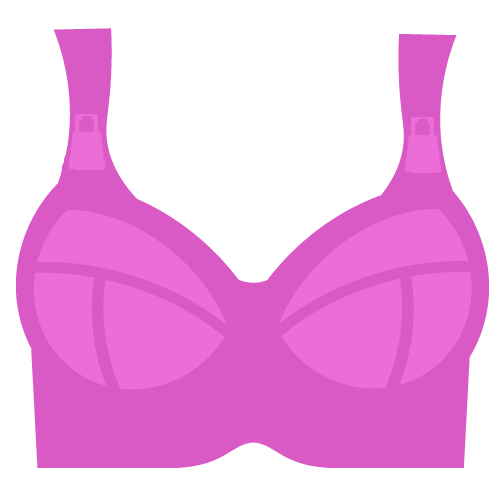
A nursing bra is designed for breastfeeding mothers. It typically has a unique cup design that can be easily unfastened or pulled aside to allow for easy access to the breast during feeding. The bra may also have additional features, such as adjustable straps and removable pads for added comfort and convenience.
Advantages:
- These bras are designed to allow for easy access to the nipple to allow babies to nurse without requiring the parent to remove their shirt or entire bra.
Disadvantages:
- Nursing bras may not be as suitable during the weaning process as the size of the breasts may change quickly.
